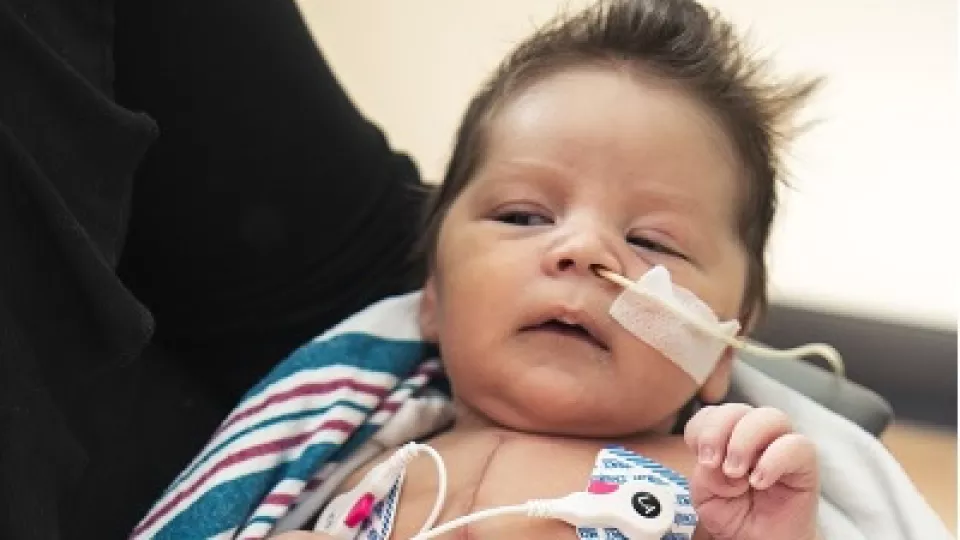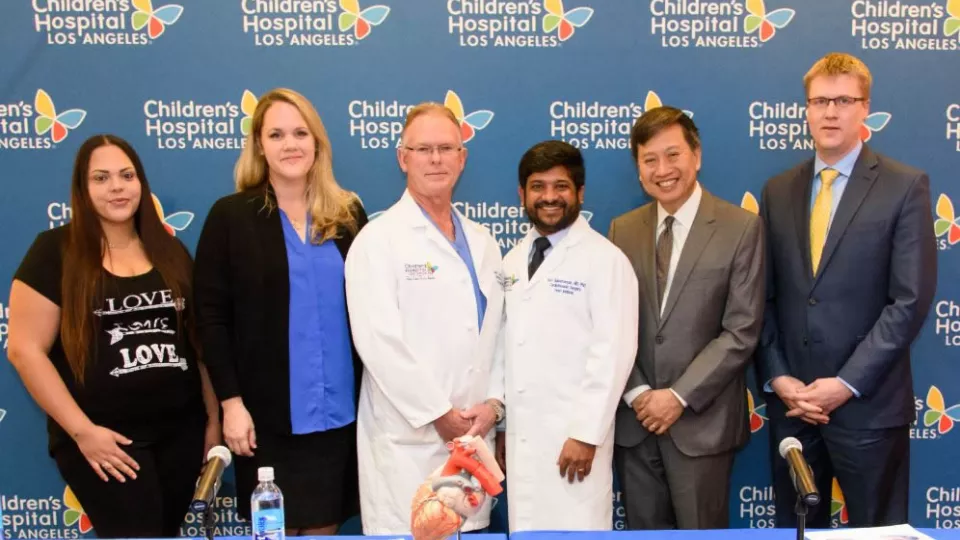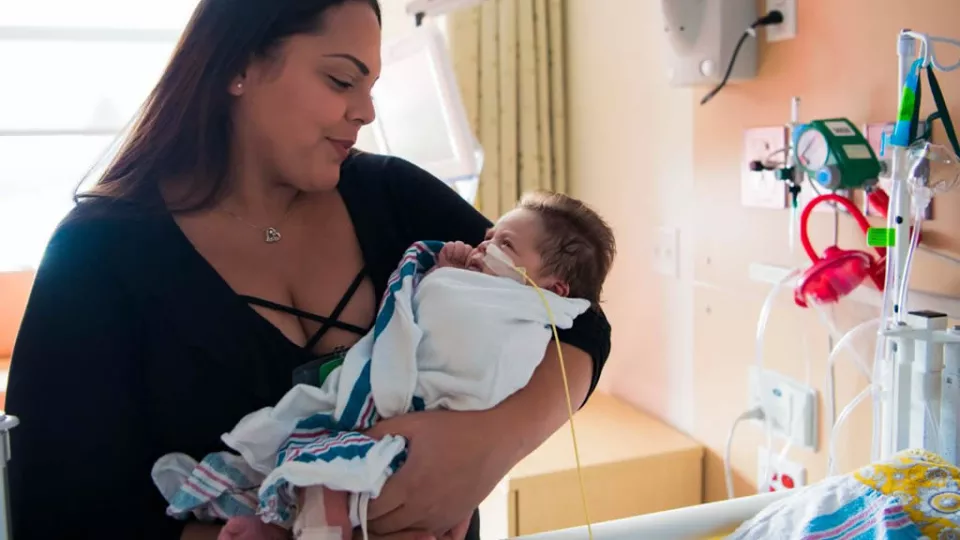
Stem cells may help repair hypoplastic left heart syndrome
New therapy could boost organ repair and delay or even prevent heart failure in children
Children born with hypoplastic left heart syndrome (HLHS) – a congenital heart defect in which the left ventricle is severely underdeveloped – are essentially left with half a heart. An innovative new therapy using stem cells from umbilical cord blood is now being used to delay or even prevent heart failure in children with HLHS in a first-ever clinical trial.
In HLHS, the left ventricle of the heart can’t pump oxygen-rich blood from the lungs to the rest of the body. About 1,000 children in the U.S. are born each year with the condition, which is fatal unless corrected by surgery. Children must undergo a series of three surgeries in their first three years of life, the first of which takes place within two to five days of birth, to re-route the heart’s blood flow and make the right ventricle the main pumping chamber. However, over time, doctors have discovered that as children reach late adolescence, their reconstructed hearts begin to show signs of cardiopulmonary deterioration.
Stem cells from babies own umbilical cord blood may boost organ repair
Now, Children’s Hospital Los Angeles is participating in a groundbreaking clinical study, where HLHS newborns will have their umbilical cord blood collected at birth and shipped to the Mayo Clinic, where it is specially processed to create highly concentrated stem cells. They are then frozen and stored until the baby is ready for their second open-heart surgery, which takes place at about six months of age. This is when the baby’s own stem cells are thawed and injected into the heart muscle. By injecting stem cells into the right ventricle of a baby with HLHS, scientists hope to find out if muscle in this area can be increased, making it better able to perform the ‘double duty’ required to pump blood throughout the body.

Ram Kumar Subramanyan, MD, PhD, a cardiothoracic surgeon who is heading the HLHS study in CHLA’s Heart Institute, spends much of his time repairing the tiny hearts of babies born with congenital heart disease. As a basic science researcher, he is focused on regenerative medicine in which scientists grow human cells that could be implanted into a patient to repair damaged organs.
According to Subramanyan, while much of regenerative medicine is focused on creating whole organs such as kidneys and intestines, this approach is not currently viable for an organ as complex as the heart. Eventually, the goal will be to use stem cells to grow structures like a valve, but it doesn’t have to start there.
“All we may require is an injection of stem cells to boost development of muscle in the right ventricle to repair a baby’s heart,” explains Subramanyan. “If we can use a biologic material made of the baby’s own cells to repair their heart, it has the potential to grow with the baby, and because it’s native tissue, the baby’s body would not reject it. We may even alleviate the need for another operation,” he adds.



